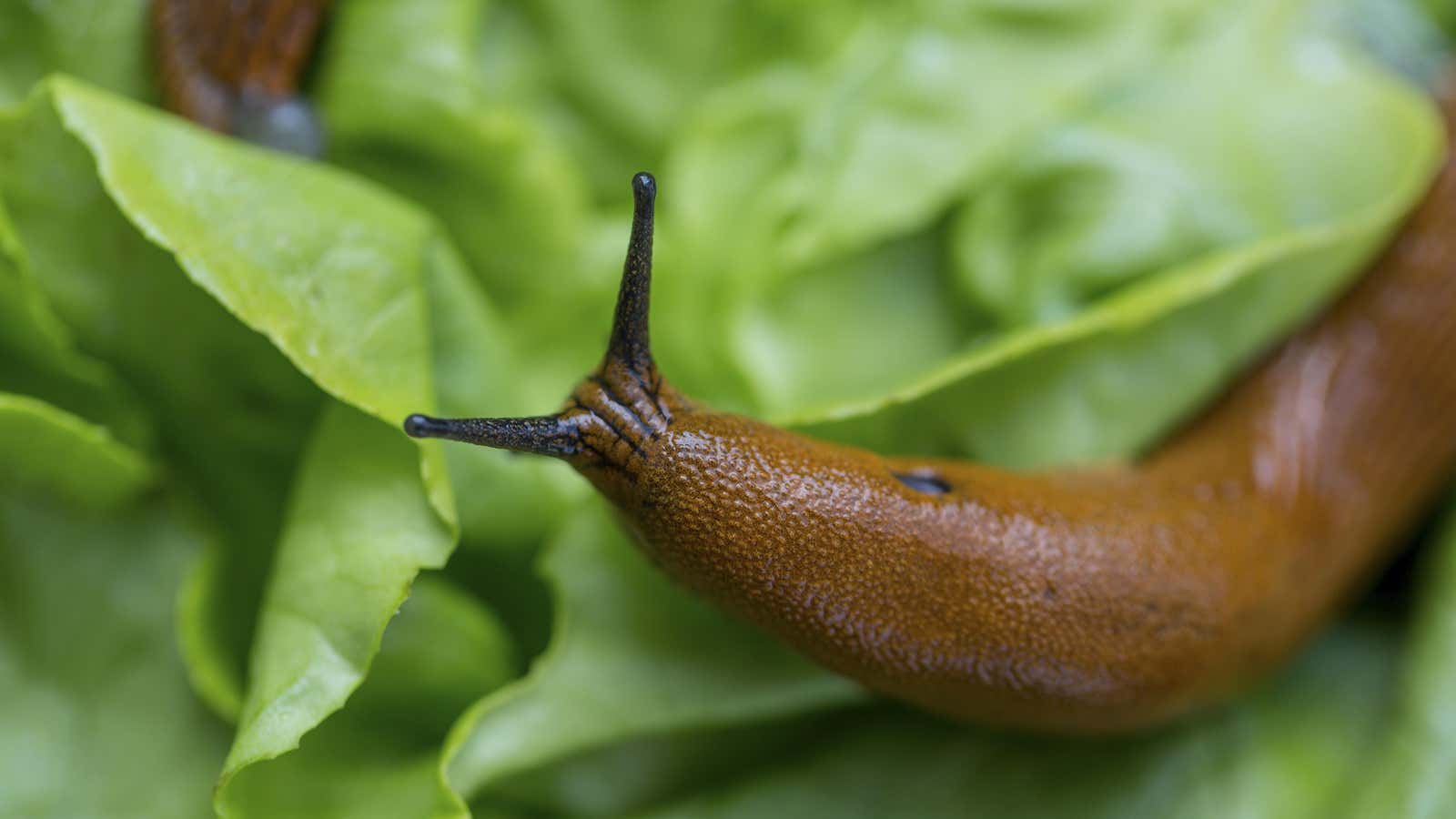How to Get Rid of Slugs in Your Garden

If you live in an area with slugs, you know that they can be a major nuisance in the garden. Nothing will ruin your carefully thought-out gardening plans like watching the remains of your tender seedlings eaten to the tips. Unfortunately, slugs are notoriously difficult to control without the use of pesticides, which harm other beneficial creatures such as bees or pose a danger to pets and children. Luckily, there are a few things you can do to keep them away from vegetable sprouts while keeping the environment friendly to flora and fauna.
Make Your Garden Slugs Feel Uncomfortable
To control garden slugs, the first thing you need to do is not give them a comfortable breeding environment. Since slugs usually feed at night and enjoy moisture, watering your garden at the end of the day can attract them. If instead you choose an early morning watering schedule, you can still prevent water from evaporating on a hot day by preventing slugs from trampling at night.
What else should be avoided is loose soil cover. Straw and mulch can retain moisture and give slugs a comfortable place to wait out the midday sun. Instead, using compost and leaf mold can create a less favorable environment for slugs.
Finally, birds, ground beetles, and snakes love to eat slugs, so the presence of some of these beneficial predators will help keep them in check. Slugs also hate furry, fragrant, and furry plants, so herbs, mature pumpkins, and fluffier, succulent species will help deter your slimy intruders.
Set a trap for slugs if you don’t mind killing them
Making a slug trap is another way to get rid of slugs if you’re not squeamish about killing them. Using a piece of board, such as a piece of plywood or a 2×4, laid between rows in your garden will give the slugs a cool, damp place to hide during the hottest part of the day. Once they have gathered, you can turn over the boards and kill them. You can also use an inverted melon skin for better bait.
Use beer as bait for slugs
A hotly debated bait for slugs is the “beer trap”. Most beer trap enthusiasts advise placing a plastic lid at ground level and filling it with beer, at which point the slugs will fall into the beer trap and drown. Detractors, however, will point out that the yeast in the beer may actually attract more slugs to your garden, and it is not known how many will fall into the beer and drown. If you do try this method, it’s best to use non-alcoholic beer, as slugs are attracted to yeast, not alcohol.
Use copper to repel slugs
Slug science says you can also scare them off with copper, as the layer of mucus on the outside of a slugs’ body causes a mild shock when it comes into contact with copper. You can install shields and barriers around individual plants and raised beds with copper tape , copper mesh , and copper rings , which come in a variety of sizes and lengths. To be effective, the copper slug barrier must completely surround the plants you are trying to protect, so this is not a universal solution, but it is effective for new seedlings.
Use a Wool Slug Repellent
To keep slugs away from the base of the plant, you can use wool pellets or a wool rug to create a slug-repellent barrier. Place the pellets around the base of the plant and then pour water over them to create a surface that slugs won’t crawl on. The mat material can be cut with scissors and placed around the base of the plants and will work similarly to pellets. This is a good option because, in addition to being biodegradable, they will last for a while without much maintenance.